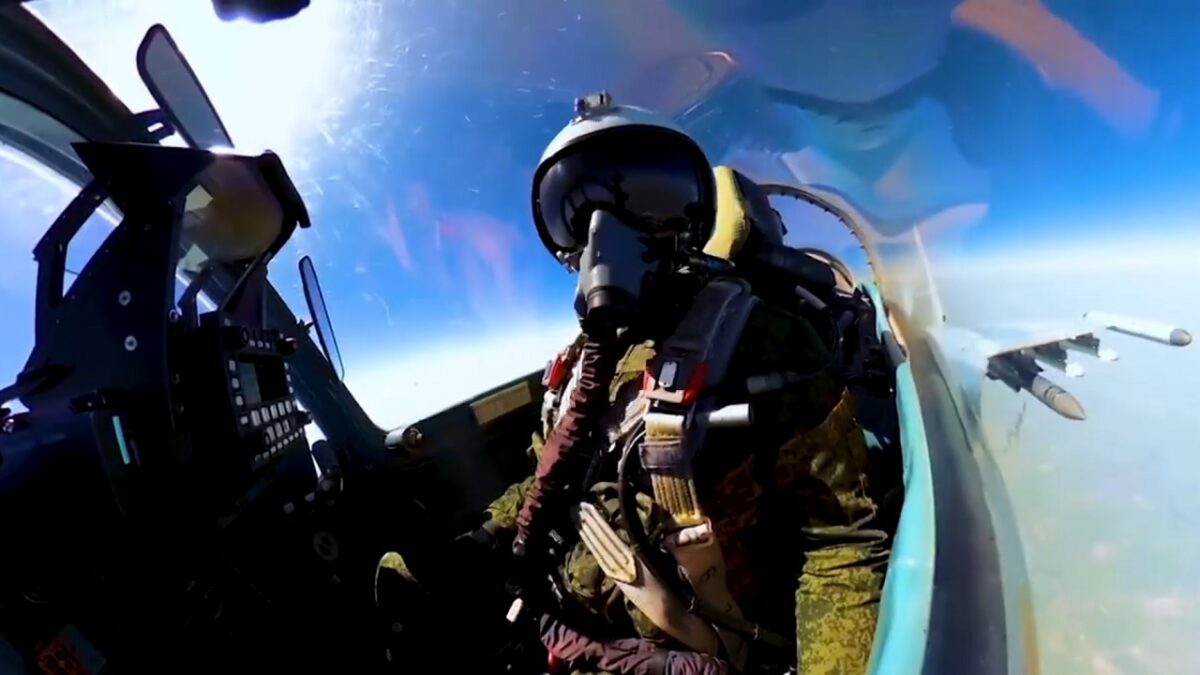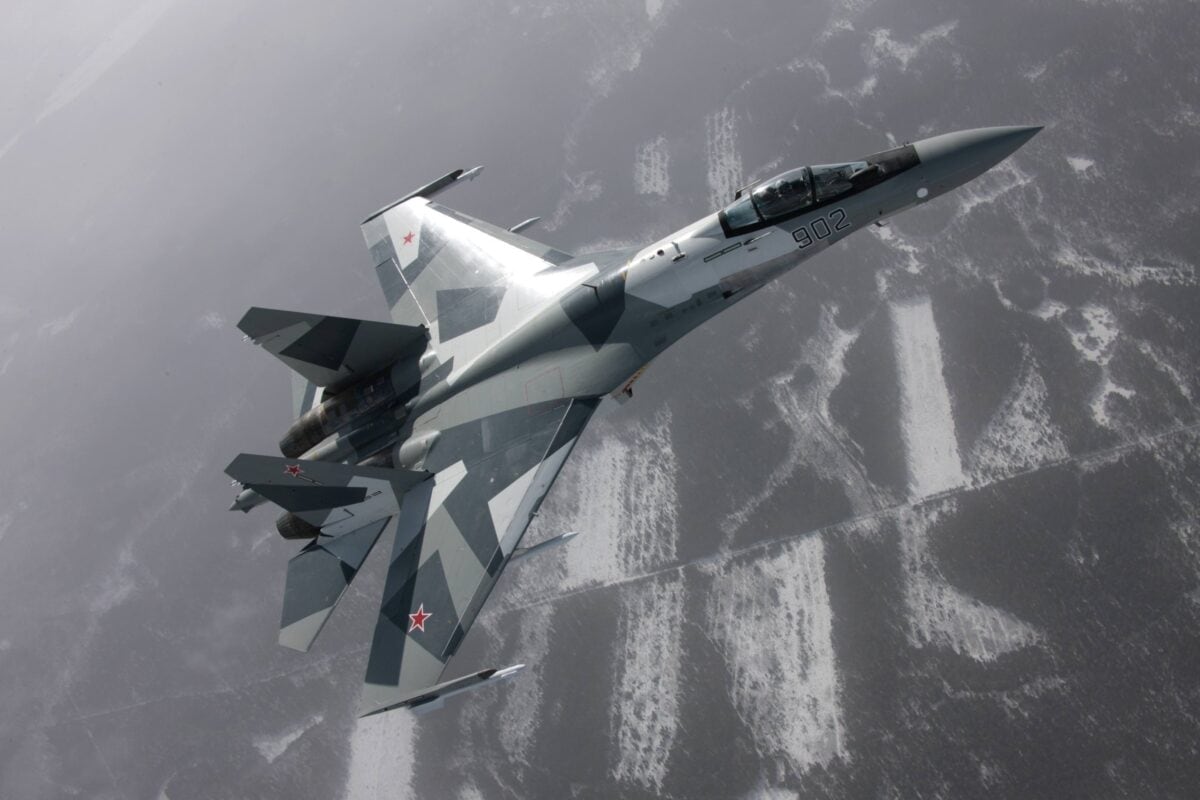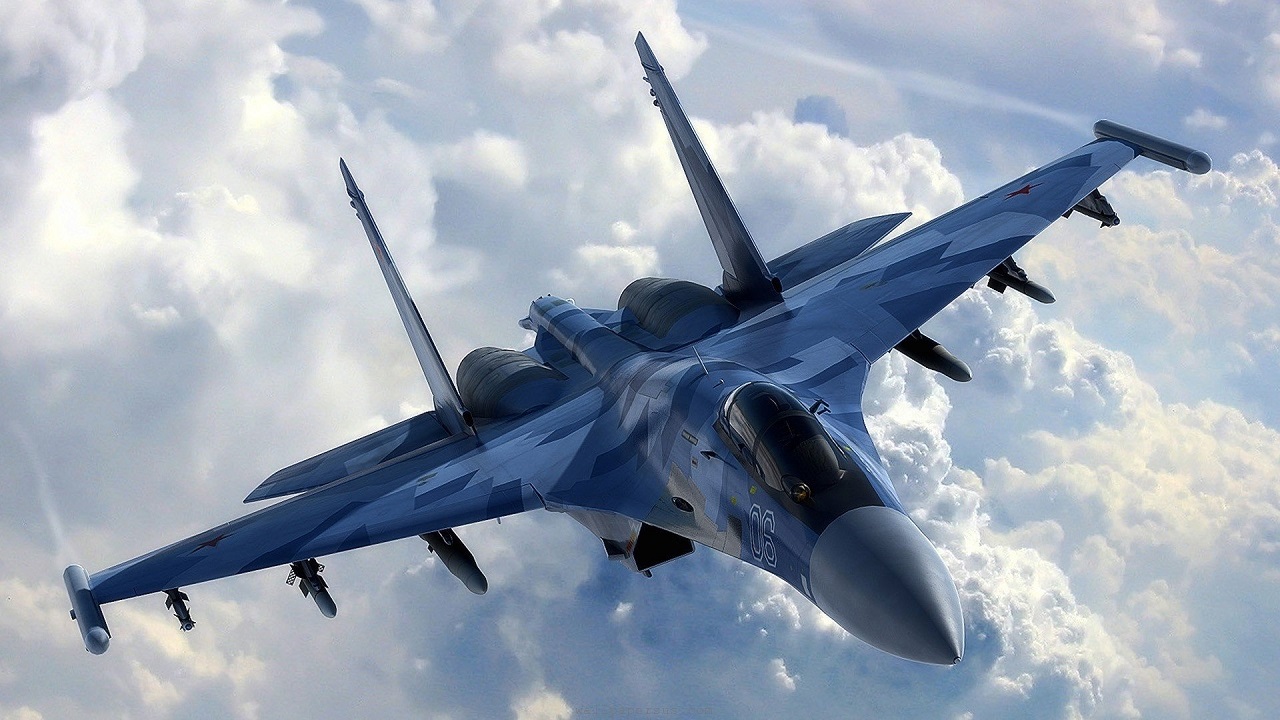In what has to be seen as a huge disappointment for Russia, its vaunted Su-35S Flanker E fighter is struggling over the skies over Ukraine. Struggling may be a kind word – let me change that to “failing.” This Russian warplane has reportedly been shot down 24 times by Ukrainian fighters and air defenses since the start of the war. That’s two squadrons destroyed. This is not a cheap jet – it costs $85 million each. Before the invasion, Russia considered the Flanker E one of its best fighters in the arsenal. What happened?
The Su-35 Is Not the Answer
This is an updated fourth-generation plus-plus fighter that is also having mechanical issues on the export market. These difficulties may be why the Kremlin is reportedly willing to make an aircraft trade with Iran: Su-35s for Iranian combat drones. Perhaps Moscow is starting to clean house. If that’s the case, the Russian air force is now throwing older fighters into the fray. The Su-24M is one replacement fighter. This airplane is outdated, and pilots are probably not excited about taking this aging steed into combat. The Su-24M is a Cold War relic that entered service in 1983.
China Is Unsatisfied with the Su-35 Import Deal
Russia thought the Su-35S would be a successful export product. It sent 24 Su-35S models to China in a 2015 deal worth $2.5 billion. China immediately complained the warplanes had defective avionics systems. Only nine of China’s Su-35s are now operational. To add to this insult, three other countries have nixed orders or refused to become customers of the Su-35.
Su-35 Has Underperformed
To be sure, the 24 destroyed Su-35s could be an inflated claim and it is difficult to determine just from open-source online intelligence and social media posts exactly how many Su-35S variants have been shot down. But it is safe to say that the Su-35S has not met or exceeded expectations Russia had before the war.
Manufacturer Spoke Glowingly About the Su-35
The Su-35S can be compared to the latest F-15 variants. The Su-35 was hyped as being more maneuverable than other NATO airplanes in its class due to its ability to move the Saturn 117S thrust-vectoring engines up and down for high angles of attack. The Russian manufacturer United Aircraft Corporation had glowing claims about the Su-35. The conglomerate boasted that the fighter has the speed, range, weapons suite, and electronic warfare capabilities to dominate the air. It was supposed to outmatch much less esteemed Ukrainian fighters.
Quick Look at Specifications
The Su-35S is a single-seat, air superiority fighter that entered service in 2012. It can be outfitted with numerous kinds of missiles: both air-to-air and air-to-surface. Bombs can be affixed to its hardpoints for effective close air support and other types of ground strikes. The top speed is 1,500 miles per hour. Its ceiling is 59,000 feet and its range is 2,200 miles.
It Does Have Disadvantages
There are shortcomings with its fire control system. The Su-35S has only a 155-mile targeting range. It is supposed to have the ability to track multiple targets, but an analyst for the Aviation Geek Club believes it cannot hit that mark and may be only able to track one target at a time.
The overall design of the airplane does not lend itself to stealthiness as the Su-35S has a high radar cross-section. The air-to-air missiles are older models. There is also no active electronically scanned array radar – a feature you would expect on a fourth-generation plus-plus.
What the Experts Told 19FortyFive: Broad Problems Across the Entire Russian Air Force
Since the airplane is having trouble over Ukraine, is this a broader problem that the Russian air force is suffering from? The strategy and tactics of many airplanes in the arsenal have not performed to the standards of what the Kremlin expected from its air force.
I asked Mark F. Cancian, a Senior Adviser to the International Security Program at the CSIS policy institute in Washington, DC, whether the Air Force’s struggles are a symptom of poor Russian planning, preparation, and execution of strategy.
“Russia’s inability to establish air superiority early in the war was a surprise. Most observers, myself included, expected Russia to do to Ukraine as the United States did to Iraq in 1991 and 2003. That is, take out its air defenses in the first few days so that it had air superiority for the rest of the war. Six months in, Russia has still not established complete air dominance.”
I wondered if this was a Kremlin strategic decision or if the air force is just not that good. Perhaps the Russian air force generals made poor operational plans and promised Putin they would quickly destroy Ukraine’s Air Force.

Russia pilot behind the controls of a Su-35S. Image Credit: Twitter Video Screenshot.
Cancian replied, “This does not appear to be a planning problem. The Russians had plenty of time to adjust their operations after failing to establish air superiority early on. They could have tried a different plan but didn’t. Several theories have been put forward about this failure. It might be a lack of pilot skill, poor maintenance, or concerns about aircraft survivability. For whatever reason, Russian aircraft avoid entering Ukrainian airspace.”
Cancian believes the problem is not destroying and degrading the Ukrainian air defenses enough. He further emphasized the analogy to American shock and awe bombing campaigns in the Middle East.
“The Russian military does not seem to have attempted a takedown of Ukrainian air defenses. In the first days of the war, there were no massive missile attacks on air bases backed up by strikes by aircraft as the United States had done against Iraq,” he said.
I thought that the Russian airplanes, like the Su-35, were just not built correctly. Cancian disagreed.

Image: Creative Commons.
“Manufacturing defects or an unlikely cause for the Russian Air Force’s poor performance. There has been plenty of time to fix defects,” Cancian said.
Russia has adjusted its tactics to fly outside Ukrainian air space and fire stand-off missiles. But precision-guided munitions are running out and Russia is having to depend more on conventional “dumb” weapons. The difficulties with the Su-35 look to be an outgrowth of a larger problem – if there is no air superiority in place – even your best airplanes can be shot down by a determined enemy.
Expert Biography: Serving as 1945’s Defense and National Security Editor, Dr. Brent M. Eastwood is the author of Humans, Machines, and Data: Future Trends in Warfare. He is an Emerging Threats expert and former U.S. Army Infantry officer. You can follow him on Twitter @BMEastwood. He holds a Ph.D. in Political Science and Foreign Policy/ International Relations.

